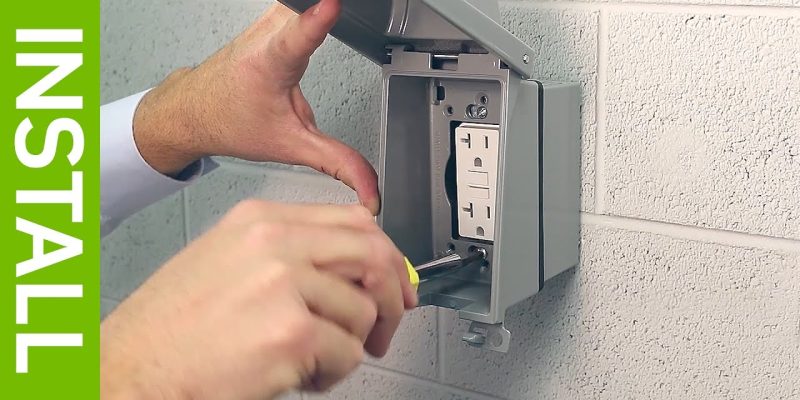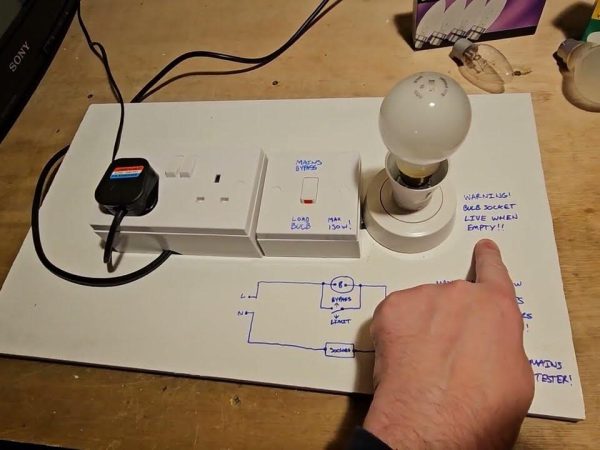10 Things to Know About a Weatherproof Outlet Box: The Ultimate Guide to Safe Outdoor Electrical Installations

Outdoor electrical safety is something most homeowners overlook—until it’s too late. Rain, snow, and humidity can wreak havoc on electrical outlets, leading to short circuits, corrosion, and even dangerous shocks.
That’s where a weatherproof outlet box comes in. Designed to shield outdoor electrical connections from moisture, debris, and extreme weather, this simple yet vital piece of equipment ensures both safety and longevity for your outdoor power sources.
Whether you’re setting up patio lighting, powering garden tools, or installing security cameras, understanding how to choose and install a weatherproof outlet box is essential for any safe outdoor electrical installation.
What Is a Weatherproof Outlet Box?
A weatherproof outlet box is a protective enclosure designed to house electrical outlets and wiring, keeping them safe from environmental exposure.
Unlike indoor outlet boxes, which are typically made for dry areas, weatherproof models are built to resist:
- Rain and snow
- Dust and debris
- UV rays and corrosion
They are typically made from durable materials such as PVC, metal (like aluminum or cast iron), or heavy-duty thermoplastic. When properly installed with a sealed cover, these boxes prevent water and moisture from entering and damaging your electrical system.
In simple terms, it’s the first line of defense for any outdoor power connection.
Why Weatherproofing Matters in Outdoor Electrical Systems
Electricity and moisture are a dangerous combination. If water infiltrates an electrical outlet, it can cause:
- Short circuits
- Electrical fires
- Ground faults or electrocution risks
- Premature equipment failure
By installing a weatherproof outlet box, you create a sealed, protective environment that maintains safe, reliable connections even in wet or extreme conditions.
In fact, the National Electrical Code (NEC) requires the use of weatherproof boxes and covers for all outdoor electrical installations — including decks, patios, and gardens.
Types of Weatherproof Outlet Boxes
There are several types of weatherproof outlet boxes, each designed for different installation needs. Understanding the right type ensures safety and functionality.
Single-Gang Weatherproof Box
Holds one outlet or switch. Ideal for simple outdoor applications like powering lights or small tools.
Double-Gang Weatherproof Box
Accommodates two outlets or devices. Common for outdoor kitchens or garden power setups.
Round Weatherproof Box
Used for mounting outdoor lighting fixtures, especially in gardens or driveways.
Multi-Gang Weatherproof Box
Supports three or more outlets or switches. Suitable for complex installations requiring multiple connections.
Deep or Shallow Mount Boxes
The depth of the box determines how much wiring it can safely contain. Deeper boxes handle more wiring or thicker cables.
Each of these types can be found in surface-mount or flush-mount versions, depending on your wall or post setup.
Materials Used in Weatherproof Outlet Boxes
Choosing the right material for your weatherproof outlet box is crucial for long-term performance and protection. Here are the most common options:
PVC (Plastic)
- Lightweight and affordable.
- Resistant to corrosion and UV damage.
- Easy to install for DIY projects.
Metal (Aluminum or Steel)
- Highly durable and strong.
- Ideal for commercial or heavy-duty outdoor environments.
- Better grounding capabilities.
Thermoplastic
- Combines durability and flexibility.
- Resistant to impact, corrosion, and extreme temperatures.
Pro Tip:
For coastal areas or high-moisture zones, PVC or thermoplastic boxes are ideal to prevent rust and corrosion.
How to Install a Weatherproof Outlet Box (Step-by-Step)
Installing a weatherproof outlet box requires attention to safety and compliance. Follow these general steps:
Step 1: Turn Off the Power
Always shut off power to the circuit at the breaker box before working with any wiring.
Step 2: Choose the Right Location
Select a spot that’s easily accessible but protected from direct rainfall when possible.
Step 3: Mount the Box
Attach the weatherproof box to a wall, post, or other solid surface using corrosion-resistant screws.
Step 4: Run the Wiring
Use outdoor-rated cable (UF or NM-B) and feed it through a watertight connector into the box.
Step 5: Connect the Outlet
Attach the wires (black to hot, white to neutral, green or bare to ground). Secure the outlet with mounting screws.
Step 6: Add the Cover Plate
Seal the installation with a weatherproof outlet cover that includes a gasket for full protection.
Step 7: Test the Outlet
Once complete, turn the power back on and test the outlet using a voltage tester to confirm functionality.
Safety Note:
If you’re unsure about electrical work, it’s best to hire a licensed electrician to ensure your installation meets code requirements.
Features to Look for in a Quality Weatherproof Outlet Box
When shopping for a weatherproof outlet box, consider these features to ensure top performance:
- UL or CSA certification – ensures safety and code compliance.
- Gasketed covers – keep water and dust out.
- Impact-resistant material – withstands outdoor wear and tear.
- Corrosion-proof construction – essential for coastal or humid areas.
- Knockouts and ports – allow flexible wiring configurations.
- Easy mounting design – saves installation time.
Choosing a high-quality model prevents future maintenance issues and ensures years of worry-free use.
Common Mistakes to Avoid During Installation
Even the best weatherproof outlet box won’t protect your wiring if it’s installed incorrectly.
Avoid these common errors:
- Skipping the gasket: The gasket provides a tight seal; never install without it.
- Using indoor outlets: Always use GFCI (Ground Fault Circuit Interrupter) outlets outdoors.
- Incorrect wiring: Mixing up hot and neutral wires can lead to short circuits.
- Loose fittings: Gaps allow water and insects to enter the box.
- No drip loop: Always create a loop in the cable below the box to prevent water from running in.
By avoiding these mistakes, you’ll ensure your outlet remains safe, durable, and fully weatherproof.
Maintenance Tips for Weatherproof Outlet Boxes
Once installed, your weatherproof outlet box will require minimal maintenance — but a few simple steps can extend its lifespan:
- Inspect quarterly for cracks, rust, or loose screws.
- Check gaskets regularly and replace if worn or brittle.
- Clean dirt and debris from covers and around outlets.
- Ensure tight seals after storms or heavy rain.
- Reapply sealant if necessary to maintain waterproof integrity.
With regular upkeep, your outdoor electrical setup will stay safe and efficient for years to come.
Choosing the Right Weatherproof Outlet Box for Your Project
Selecting the best weatherproof outlet box depends on your specific needs.
- For homeowners, single- or double-gang PVC boxes are usually sufficient for garden lighting or patio power.
- For commercial settings, metal boxes provide added durability and grounding support.
- For DIY enthusiasts, thermoplastic boxes offer easy installation with long-lasting performance.
Always match the box type and rating with the intended electrical load and environment. When in doubt, check local building codes or consult an electrician for guidance.
Safety Standards and Certifications
Every weatherproof outlet box should meet safety standards defined by regulatory agencies. Look for certifications like:
- UL Listed (Underwriters Laboratories) – ensures product safety under wet conditions.
- CSA Certified – meets Canadian and U.S. safety standards.
- NEMA Ratings – indicates enclosure protection levels (e.g., NEMA 3R or NEMA 4X for outdoor use).
These certifications confirm that your outlet box can withstand moisture, corrosion, and environmental exposure.
Conclusion
Installing a weatherproof outlet box is a small but vital step toward a safer and more reliable outdoor electrical system. From powering holiday lights to running garden tools or outdoor kitchens, these protective enclosures keep your connections dry and secure year-round.
By understanding the different types, materials, and installation practices, you can confidently protect your home and prevent costly electrical hazards.
When it comes to electricity and weather, protection equals prevention — and a quality weatherproof outlet box is your best defense.
FAQs
1. Can I use a regular outlet box outdoors?
No. Only weatherproof outlet boxes designed for outdoor use can withstand moisture and temperature changes safely.
2. Do I need a cover for my weatherproof outlet box?
Yes. A cover with a gasket seal is required by electrical codes to ensure water resistance and safety.
3. Can I install a weatherproof outlet box myself?
Yes, if you’re comfortable with basic electrical work. However, for new circuits or complex wiring, hire a licensed electrician.
4. Are weatherproof outlet boxes expensive?
Not at all. Most models range between $5 and $25, depending on material and size, making them a cost-effective safety upgrade.
5. How long do weatherproof outlet boxes last?
With proper installation and maintenance, they can last 10–20 years or more, even in harsh climates.
Also read: How Many People Did God Kill in the Bible? A Shocking Biblical Breakdown











